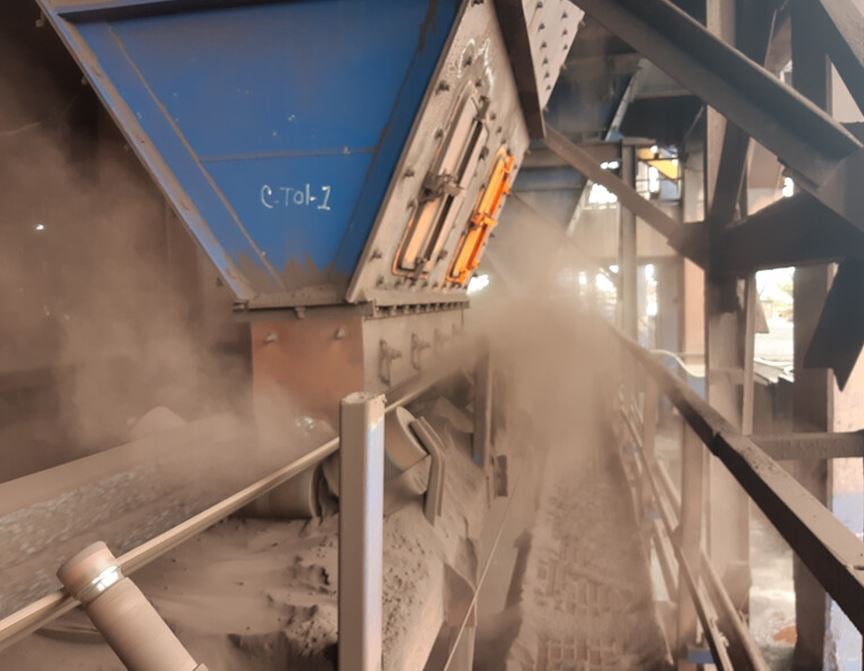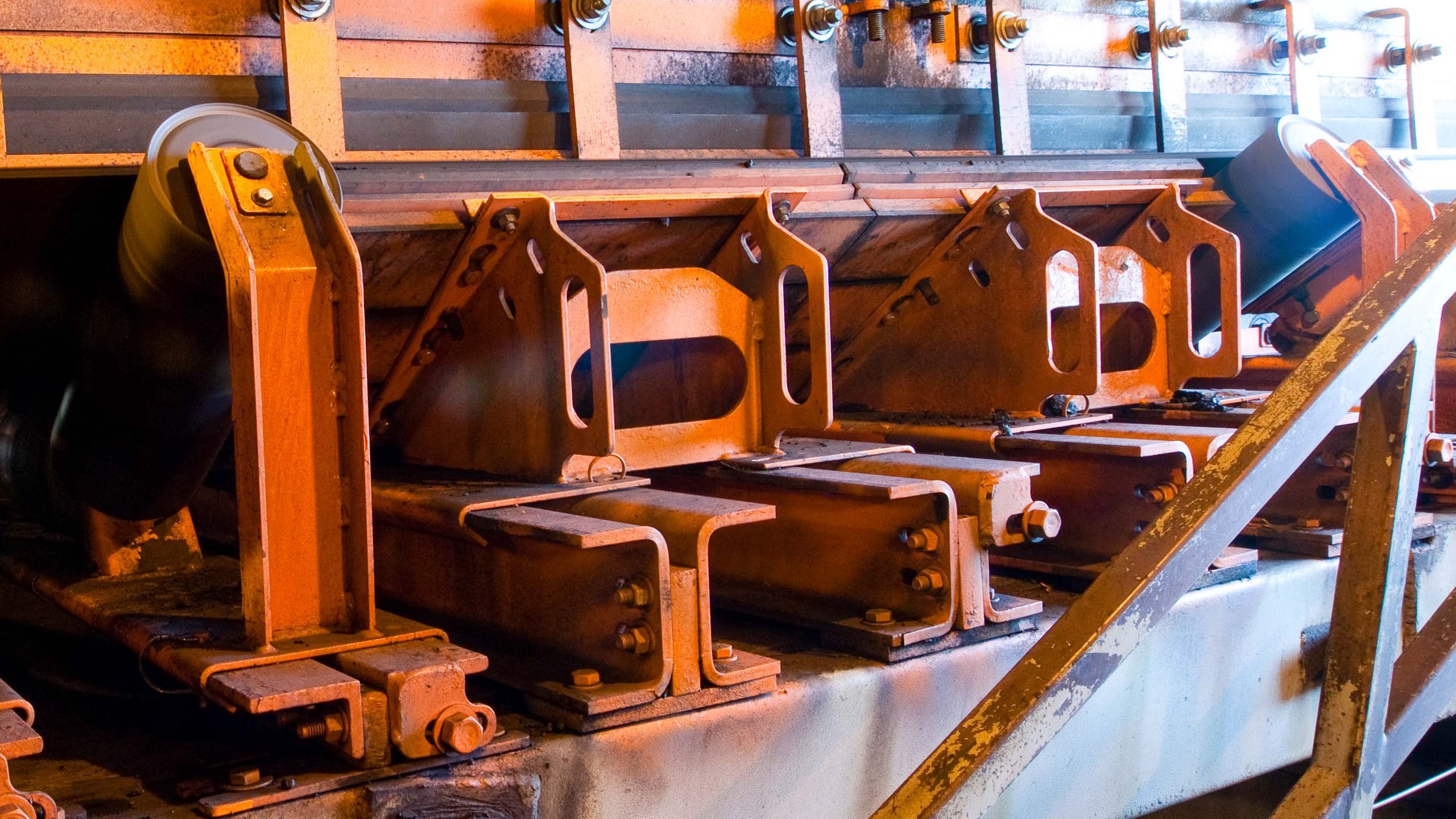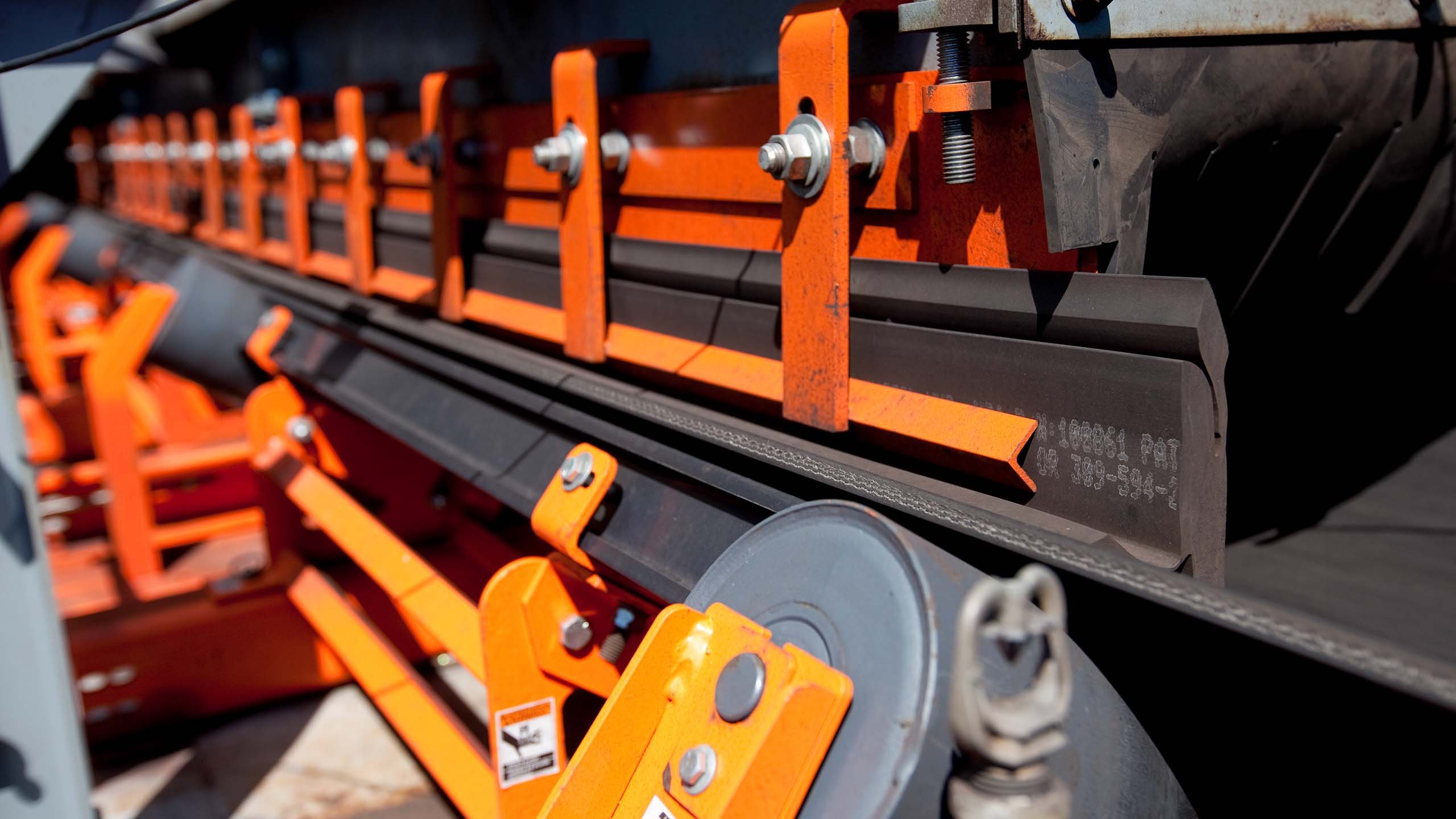The spacing between the rolling components has a dramatic effect on the idlers’ support and shaping missions. Idlers placed too far apart will not properly support the belt nor enable it to maintain the desired profile. Placing idlers too close together will improve belt support and profile, but will increase conveyor construction costs and may lead to an increase in the conveyor’s power consumption.

Normally, idlers are placed close enough to support a fully loaded belt so it will not sag excessively between them. If the belt is allowed too much sag, the load shifts as it is carried up and over each idler and down into the valley between. This shifting of the belt increases belt wear and power consumption. The sag also encourages material spillage. CEMA has published tables of recommended idler spacing for applications outside the loading zone.
The spacing of return idlers is determined by belt weight, because no other load is supported by these idlers and sag related spillage is not a problem on this side of the conveyor. Typical return spacing is 3 meters (10 ft).
Idlers in the Skirted Area
The basic and traditional way to improve belt support, and so reduce belt sag under a loading zone or anywhere else along the conveyor, is to increase the number of idlers. By increasing the number of idlers in a given space – and consequently decreasing the space between the idlers – the potential for belt sag is reduced. Idlers can usually be positioned so that their rolls are within 25 millimeters (1 in.) of each other.
Track-mounted designs allow idlers to be serviced much easier.
However, this method is not without drawbacks. As the idlers are packed more tightly, it becomes more difficult to service them. Idler sets are typically maintained by laying the framework over on its side to allow the rolls to be lubricated or replaced. If the idlers are closely spaced, there is no room available for the idler set to be laid on its side to allow the maintenance to be preformed. To reach one set of idlers, one or more adjacent sets must be removed, creating a “falling domino” chain reaction.




















Leave Comment